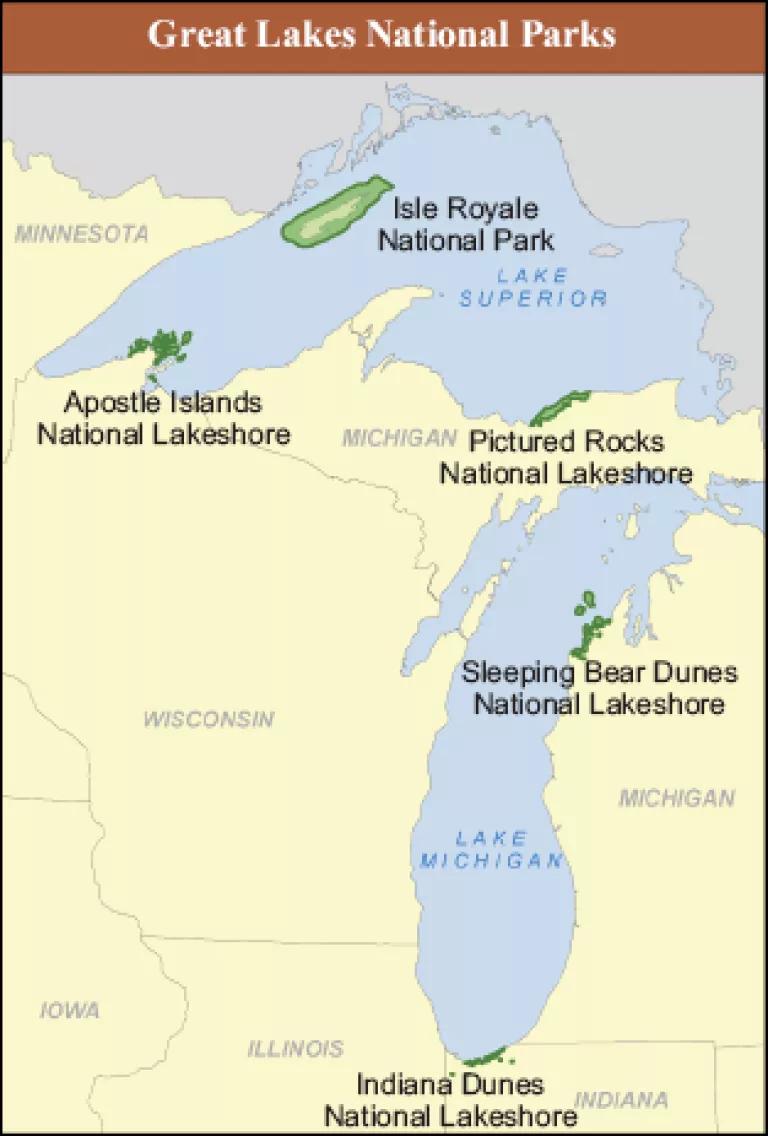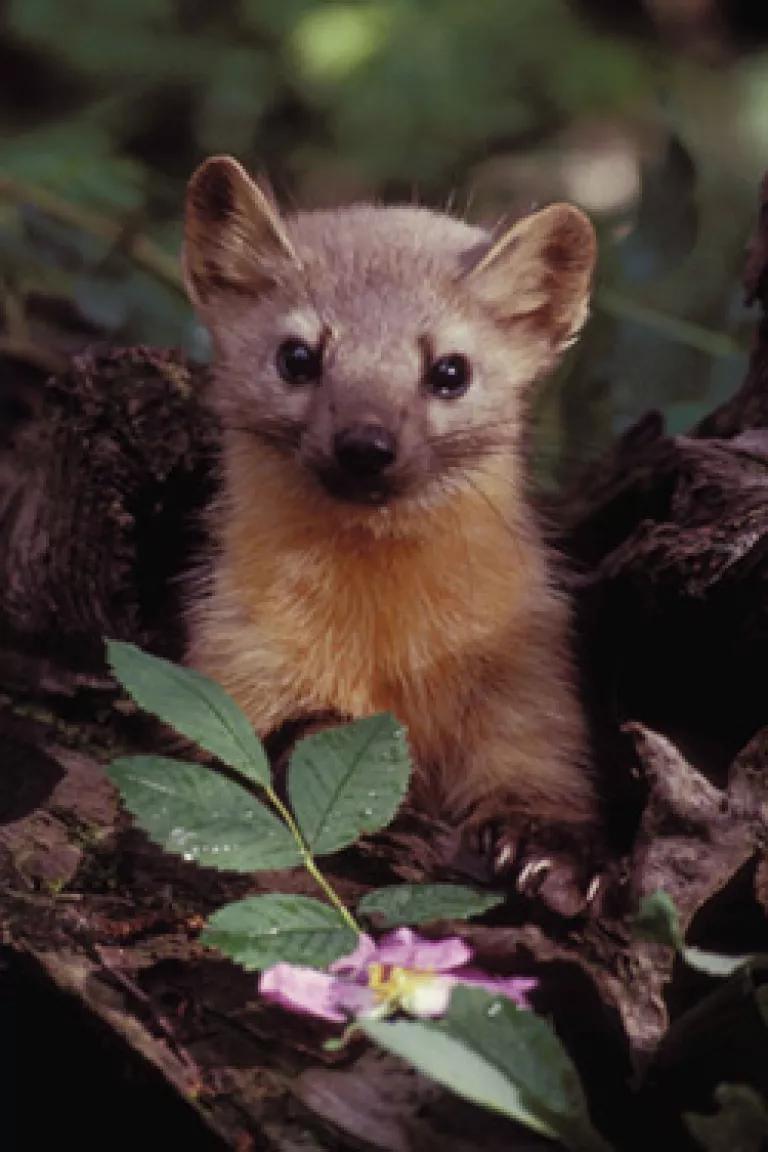
Our National Parks have been called 'America's Best Idea.'
But a new report we've released today with the Rocky Mountain Climate Organization shows how National Parks in the Great Lakes region are already suffering from the impacts of climate disruption, and are set to suffer more. Climate change is the greatest threat our National Parks have ever faced. Not dealing with it now would be a horrible idea.
Our report, Great Lakes National Parks in Peril: The Threats of Climate Disruption, features new information on rising temperatures in the Parks. The Parks we focus on are the five largest on the Great Lakes: Indiana Dunes National Lakeshore (NL) in Indiana (near Chicago); Sleeping Bear Dunes NL, Pictured Rocks NL, and Isle Royale National Park (NP) in Michigan (just offshore from Minnesota); and Apostle Islands NL in Wisconsin. Our press release sums up the report.
The study focuses on impacts already taking place as well as those projected to happen with rising temperatures. Among the startling conclusions:
- Higher temperatures. Summers in Indiana Dunes could become as hot by late in this century (2070- 2099) as summers in Gainesville, Florida, have been in recent history (1971-2000). Summers in Sleeping Bear Dunes could become as hot as those in Lexington, Kentucky, recently have been.
- Less winter ice. Higher air and water temperatures already are reducing winter ice cover on the Great Lakes, a trend expected to accelerate. Lake Michigan may have some winters with no ice cover in as soon as 10 years, and Lake Superior may typically be ice-free in about three decades.
- Major erosion of shoreline and related features. With less ice and more open waters, the lakes will have more waves in winter than before, especially during strong storms, increasing erosion threats to park shorelines and structures. The park staff at Sleeping Bear Dunes has expressed concern that the park’s signature perched dunes, atop towering bluffs above the shorelines, could be vulnerable to accelerated loss from increased erosion, resulting from a loss of winter ice and snow cover that keeps the dunes’s sand from blowing away and from more waves undercutting the bluffs on which the dunes perch.
- Loss of wildlife. In Isle Royale, the moose population has declined, as have the numbers of the wolves that depend on them as prey. Other park mammals at risk as the climate changes include lynx and martens. Birds at risk of being eliminated from the parks include common loons and ruffed grouse, iconic birds of the Great Lakes and the North Woods.

Dale Engquist, former superintendent, Indiana Dunes National Lakeshore, and president, Chicago Wilderness Trust, said at the release of the report:
Change in nature is natural. But the changes we face with the accelerated rate of global climate change that our human activities have caused don’t allow millennia or even centuries for adaption; the changes now will take place in only decades without time for nature to adapt.
Larry J. MacDonald, mayor, Bayfield, Wisconsin, added:
The City of Bayfield, as the gateway community to the Apostle Islands National Lakeshore, faces the financial reality that climate change will bring tremendous economic challenges to our National Lakeshore-based local tourism economy. We need to continue to respect and protect Lake Superior. When the Lake is healthy, our community and the Apostle Islands will continue to prosper.
The new RMCO/NRDC report also concludes:
- The amount of rain falling in heavy storms in the Midwest increased by 31 percent over the past century. This is well above the national average of 22 percent.
- Winds over the Great Lakes already are stronger than they used to be. Lake Superior wind speeds have increased by 12 percent since 1985.
- The waters in the Great Lakes are hotter, with their temperatures having increased more in recent decades than air temperatures have. Lake Superior’s summer water temperatures rose about 4.5 degrees from 1979 to 2006, roughly double the rate at which summer air temperatures have gone up over the surrounding land.
- In Isle Royale NP, the moose population is down to about 515, half the park’s long-term average. Temperatures higher than moose can tolerate could be responsible—as in nearby northwest Minnesota, where the moose population has crashed in the past two decades from 4,000 to fewer than 100 animals, coinciding with higher temperatures. Also, warmer winters in Isle Royale enable enough ticks to overwinter and cause such a large loss of blood among the moose that they are more vulnerable to the park’s wolves.
- Isle Royale’s wolf population has fallen, too. The park’s moose make up 90 percent of the wolves’s prey, and declines in the moose population threaten the wolves. The park now has only 16 wolves in two packs, compared to 24 wolves in four packs a few years ago.
- Botulism outbreaks linked to high water temperatures and low lake levels now kill hundreds to thousands of birds a year in Sleeping Bear Dunes NL. There are so many dead birds cover the park’s beaches that the National Park Service patrols from June through November to clean up the bird carcasses.
- In 2010, a tick of the type that carries Lyme disease was confirmed at Isle Royale for the first time -- a fact apparently being reported publicly for the first time in this report. Cold temperatures previously prevented the ticks that carry Lyme disease from reaching so far north, but their spread into the region had been projected as the climate gets hotter. The Lyme disease ticks also apparently have spread to nearby Grand Portage National Monument for the first time.

Let's act now to protect these special places.



